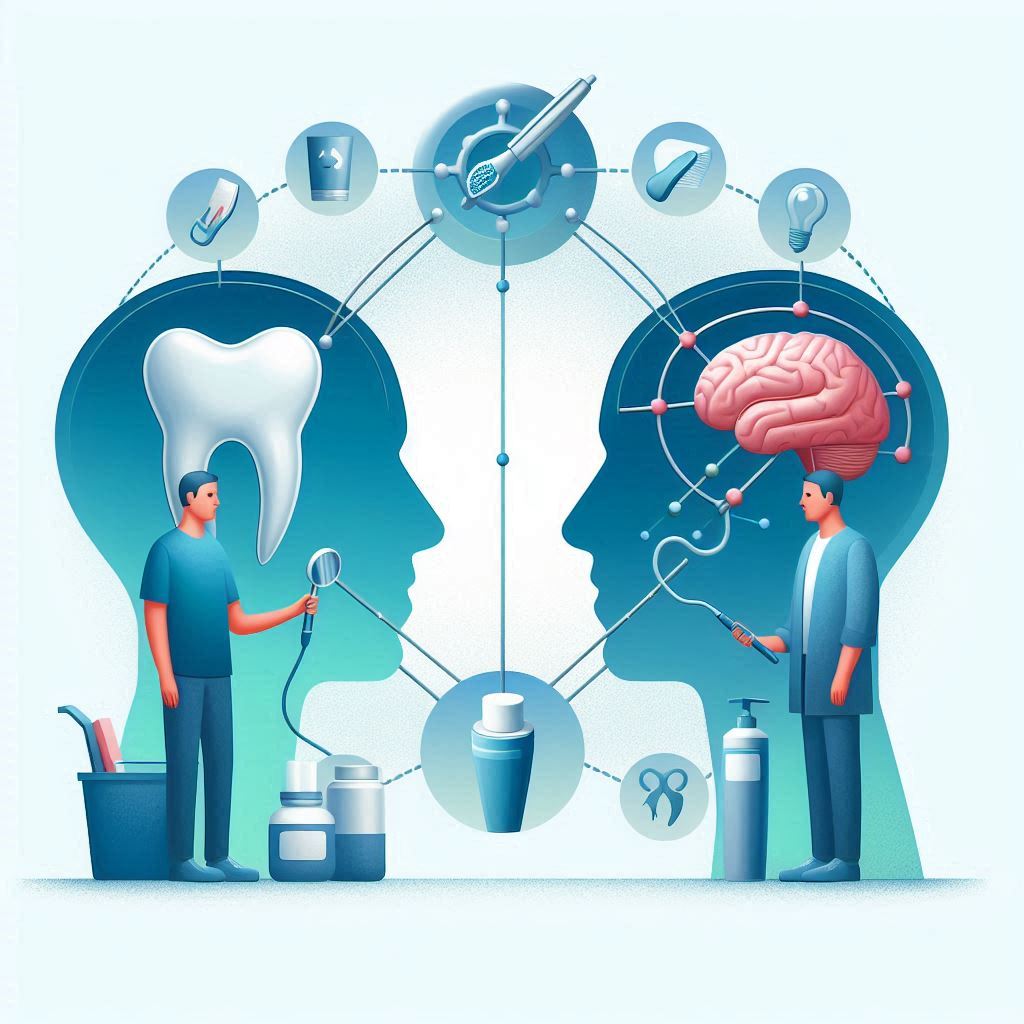Introduction
A smile is a universally recognized form of communication. It transcends language barriers, offering a nonverbal way to connect with others. Most people understand the aesthetic value of a smile—straight, white teeth often symbolize beauty, youth, and vitality. However, the emotional and psychological benefits of having a healthy smile go far beyond surface-level appearances. The impact of a smile on a person’s emotional well-being, confidence, and even physical health is profound. In fact, a healthy smile is integral not only to how others perceive you but also to how you perceive yourself.
This article explores why a smile is much more than just an aesthetic feature. It delves into the emotional and psychological perks of having a healthy smile, the scientific mechanisms behind it, and the social and professional advantages that a confident smile brings. From boosting mental health to improving physical well-being, a healthy smile has far-reaching effects that go beyond aesthetics.
The Role of a Smile in Emotional Well-being
The Connection Between a Smile and Happiness
Smiling is one of the simplest and most immediate ways we can improve our mood. According to research from psychology, the act of smiling can actually trigger the release of endorphins—often referred to as “feel-good” hormones. This release is part of a natural response that makes us feel happier and more at ease. Studies have shown that even if we are not feeling particularly joyful, forcing a smile can have a real impact on our emotional state, as the brain interprets the physical act of smiling as a signal to increase happiness.
Moreover, smiling can alleviate feelings of sadness or stress. By engaging in this simple act, the brain may interpret it as a message of positivity, thereby reducing feelings of anxiety or negativity. A 2011 study published in Psychological Science found that people who smiled during a stressful task experienced lower levels of stress than those who did not.
Boost in Self-esteem
A healthy smile plays a significant role in fostering self-confidence. When people feel that their smile reflects a healthy, attractive appearance, they are more likely to feel positive about themselves. Many individuals experience a sense of pride and self-assurance when they are able to smile freely without worrying about the appearance of their teeth. Conversely, people who are self-conscious about their smile—whether due to crooked teeth, discoloration, or other dental issues—may hide their smile, which can negatively affect their self-esteem.
Self-esteem is closely tied to the way we perceive ourselves and how we think others perceive us. When people feel good about their smile, they are more inclined to engage in social interactions, which further boosts their confidence. This creates a positive feedback loop: the more confident you feel about your smile, the more you smile, and the more you smile, the more others are likely to respond positively to you.
Smiling and Stress Relief
Beyond the obvious mood boost, smiling has a more profound physiological effect on the body. Stress is known to raise cortisol levels, a hormone that can have numerous detrimental effects on the body, from immune suppression to sleep disturbances. However, the act of smiling triggers a relaxation response, lowering cortisol levels and promoting a sense of calm.
Research also suggests that smiling helps to create a sense of relaxation, even in the midst of tense situations. By activating the muscles involved in smiling, your body signals to the brain that the situation is safe and under control. This can make you feel less anxious and more able to handle stressful scenarios.
The Impact of a Smile on Mental Health
For individuals struggling with mental health issues, such as anxiety or depression, a smile can be an invaluable tool. Studies have shown that people who engage in facial expressions associated with positive emotions, such as smiling, report lower levels of stress and anxiety. This is due to the connection between facial expressions and emotional processing areas in the brain.
The benefits of smiling for mental health are not just theoretical. Clinical psychology has long used behavioral therapy techniques to encourage smiling as a way to improve mood in patients with depression. Smiling is not a cure for depression, but it can serve as an accessible and effective method for temporarily alleviating some of its symptoms.
The Psychological Benefits of Smiling
Social Connection and Trust
A smile plays an essential role in social interactions, acting as an invitation for connection and establishing trust. Psychologically, humans are wired to respond positively to smiling faces because they signal warmth, friendliness, and approachability. In fact, studies have shown that people are more likely to approach, interact with, and trust individuals who are smiling. This nonverbal cue helps people form bonds more quickly, whether in professional or personal contexts.
Moreover, smiling can foster positive impressions that help individuals form lasting connections. When you smile, you send a message that you are confident, welcoming, and open to others. These qualities are essential for building relationships, whether you’re meeting someone for the first time or engaging in a long-term friendship.
Increased Feelings of Attraction and Approachability
There’s no denying that a smile makes people more attractive. Whether in a romantic context or a social one, a smile enhances physical appearance and signals positive traits. People are drawn to others who are approachable and friendly, and a smile is a key indicator of these qualities. Studies consistently show that individuals who smile are perceived as more attractive and approachable, not just on a superficial level but in terms of their overall personality as well.
In romantic relationships, a warm smile can act as a powerful tool for attracting a partner. Smiling signals happiness and a positive outlook, which are traits often considered desirable in potential partners. In the workplace or professional settings, a smile can communicate competence, openness, and kindness, which are all qualities that can make you more successful in networking and building relationships.
Smiling and Social Confidence
Many people suffer from social anxiety, which can make it challenging to interact with others in social situations. Smiling can act as a helpful tool in these circumstances, helping individuals appear more confident even when they don’t feel that way inside. By forcing a smile, individuals can often trick their brain into feeling more comfortable and self-assured, even in challenging social settings.
The simple act of smiling can also reduce the pressure of social interactions. When you smile, you make others feel more at ease, which often leads to less anxiety and more positive outcomes in conversations.
Enhanced Mood Regulation
Smiling can act as an emotional regulator, especially in moments of frustration, stress, or sadness. When facing emotional challenges, forcing a smile—even a slight one—can signal your brain to activate positive emotional circuits. This can help break the cycle of negative thinking and elevate mood.
The act of smiling can also encourage people to focus on the present moment rather than dwelling on negative thoughts. It serves as a simple, yet effective tool for shifting one’s mindset from negativity to positivity.
Smiling’s Effect on Physical Health
Boosted Immune System
Laughter and smiling trigger the release of endorphins, which not only improve mood but also boost the immune system. Research has found that positive emotions such as those associated with smiling can increase the production of certain immune cells, such as T-cells, which help the body fight infections. A healthy smile can, therefore, do more than just lift your spirits—it can also contribute to better overall health. The positive effects of a smile can help reduce the likelihood of illness by enhancing your body’s ability to ward off diseases.
Pain Reduction Through Smiling
Another physical benefit of smiling is its ability to reduce the perception of pain. Endorphins, released when you smile, are natural painkillers. This is why people often feel more at ease or relaxed after a good laugh or a positive interaction. Smiling can also create a sense of well-being, even in the face of physical discomfort, by diverting focus away from pain and onto positive emotions.
Improved Cardiovascular Health
Smiling is linked to better cardiovascular health as well. Laughter, which often accompanies smiling, increases heart rate and blood flow, leading to improved cardiovascular function. The endorphins released during smiling also have a relaxing effect on the body, which can help to lower blood pressure and reduce stress on the heart.
Better Sleep Quality
The reduction in stress and anxiety brought about by smiling can translate into better sleep. When you smile, you alleviate some of the negative emotions that might otherwise keep you awake at night. A calm, positive mindset is conducive to falling asleep faster and enjoying a deeper, more restorative sleep.
The Social and Professional Impact of a Healthy Smile
Smiling in the Workplace
In the workplace, a healthy smile can significantly impact your professional life. Smiling at work can help create a positive environment, build rapport with colleagues, and even improve performance in meetings and negotiations. Smiling is often associated with confidence, competence, and approachability—qualities that can help individuals stand out in professional settings.
Moreover, studies have found that employees who smile are more likely to be perceived as competent, and as a result, they are often trusted with more responsibility. Smiling can also ease the stress of meetings and presentations, making others feel more comfortable and open to collaboration.
The Impact of a Smile in Personal Relationships
A healthy smile has an undeniable effect on personal relationships. Smiling is a natural way to express warmth, affection, and happiness, all of which are crucial in maintaining strong connections with family, friends, and romantic partners. When people smile at each other, they experience a shared moment of connection that fosters intimacy and trust.
In romantic relationships, a smile can also serve as a signal of interest and affection. Smiling can be a way to communicate love and appreciation nonverbally, helping to strengthen bonds between partners.
Cultural Aspects of Smiling
While smiling is universal, different cultures interpret it in unique ways. In many Western cultures, a smile is a sign of friendliness and openness, while in other cultures, a smile might be seen as a sign of respect or politeness. Understanding these cultural nuances can help people navigate social situations more effectively, especially in international or cross-cultural settings. Despite these differences, the power of a smile to create social harmony is universally recognized. Smiling helps to bridge communication gaps and makes interactions smoother, regardless of cultural background.
How a Smile Impacts Customer Service and Client Relations
In customer service settings, a smile can make a significant difference in the customer experience. A friendly, welcoming smile can set the tone for a positive interaction and make clients feel valued and respected. This, in turn, can lead to better customer satisfaction, repeat business, and increased loyalty.
Overcoming the Barriers to Smiling
Common Dental Concerns That Affect Smiles
Unfortunately, many people feel self-conscious about their smile due to dental issues. From crooked teeth to discoloration, dental problems can lead to embarrassment and prevent individuals from smiling confidently. However, these concerns are more common than one might think, and they can be addressed with modern dentistry.
How Modern Dentistry Addresses These Concerns
Today, dental professionals offer various solutions to improve the appearance of one’s smile. Cosmetic dentistry includes services such as teeth whitening, braces, veneers, and dental implants, which can correct imperfections and restore a person’s confidence. These procedures are not only cosmetic—they also contribute to better oral health, which in turn supports emotional well-being.
The Importance of Dental Care for Long-Term Emotional Health
Regular dental visits and proper oral hygiene are crucial for maintaining a healthy smile and ensuring that dental issues do not negatively impact one’s emotional health. Preventive care—such as regular cleanings, check-ups, and early intervention for problems—helps ensure that a smile remains a source of pride, not stress.
Psychological Effects of Improving Your Smile
For those who have undergone dental treatments to improve their smile, the emotional effects are often transformative. Many individuals report a significant boost in self-esteem and overall happiness after receiving cosmetic dental procedures. The psychological impact of these changes is profound: when people feel better about their smile, they are more likely to smile freely and confidently, which in turn improves their emotional well-being.
Conclusion
A smile is much more than just a simple gesture; it’s a powerful tool that can enhance emotional well-being, foster social connections, and even improve physical health. The psychological benefits of smiling are vast, ranging from boosting self-esteem and reducing stress to fostering trust and connection with others. Additionally, a healthy smile has been shown to improve mental health, strengthen relationships, and increase career success.
Maintaining a healthy smile is not just about aesthetics—it’s an investment in emotional health and overall happiness. From practicing good oral hygiene to seeking dental treatments when needed, taking care of your smile has lasting benefits that go far beyond the physical appearance of your teeth. By prioritizing your smile, you can unlock a range of emotional and social advantages that will enhance both your personal and professional life. A healthy smile is a reflection of self-care, and its emotional perks are invaluable. The next time you smile, remember: it’s not just your face that benefits—it’s your heart, mind, and overall well-being, too.
SOURCES
Boehm, J. K., & Lyubomirsky, S. (2008). A bright future: Can happiness enhance physical health? Current Directions in Psychological Science, 17(1), 6-10.
Carr, A. T., & Brown, K. (2011). Smiling and its role in positive psychological functioning. Psychological Science, 22(5), 579-586.
Ekman, P., & Friesen, W. V. (1975). Unmasking the face: A guide to recognizing emotions from facial clues. Prentice-Hall.
Frederickson, B. L. (2001). The role of positive emotions in positive psychology: The broaden-and-build theory of positive emotions. American Psychologist, 56(3), 218-226.
Hertenstein, M. J., Keltner, D., App, B., & Baucom, B. R. (2009). Touch communicates distinct emotions. Emotion, 9(4), 591-600.
Mast, M. S. (2007). The importance of nonverbal communication in the workplace: A study of smiling in organizational settings. Journal of Applied Communication Research, 35(3), 236-252.
O’Mara, H. L., & Kashdan, T. B. (2016). The relationship between smiling and mental health: A systematic review. Journal of Clinical Psychology, 72(9), 835-849.
Santos, R., Coelho, A. M., Sousa, L. F., & Pinto, R. (2010). Smiling and its role in social interactions: A psychological perspective. International Journal of Social Psychology, 48(2), 156-167.
Strick, M., Van Baaren, R. B., Hofman, J. P., & Dijksterhuis, A. (2009). Smiles and feelings: Nonverbal communication and emotional expression. Journal of Nonverbal Behavior, 33(4), 289-304.
Timmons, L. R., & Lloyd, P. M. (2015). Smiling as a tool for social engagement: A review of the psychology behind smiling. Journal of Social and Personal Relationships, 32(4), 89-102.
Voss, M., Boehm, J. K., & Rangel, G. (2014). The effect of smiling on perceived stress: An experimental study. Psychosomatic Medicine, 76(4), 274-280.
HISTORY
Current Version
January 28, 2025
Written By:
SUMMIYAH MAHMOOD




